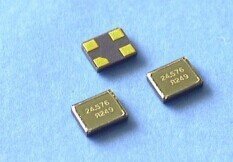We must first understand its operating frequency and adjust the frequency difference under the specified conditions, the reference temperature (25 ± 2 ℃) of the allowable deviation of the operating frequency from the nominal frequency, for a high-reliability system design, the quartz crystal oscillator The choice is very important, especially the design of a system with wake-up from sleep. If the selection is incorrect, it is easy to cause the crystal oscillator to start to oscillate very slowly or not at all. Perhaps it is because the excitation power of the supply voltage to the quartz crystal is reduced. This phenomenon is not particularly obvious at power-on reset, because the circuit is powered on. With enough disturbance, it is easy to establish oscillations. In the wake of sleep, the disturbance of the circuit is much smaller than when the power is turned on, and it becomes a little difficult to start the vibration. In the oscillation circuit, the quartz crystal can neither be over-excited nor under-excited. The choice of crystal must at least consider: nominal frequency, resonance frequency, load capacitance, excitation power, temperature characteristics, and long-term stability.

1. Is your crystal oscillator overdriven?
The resistor RS is often used to prevent the crystal oscillator from being over-driven. Excessive driving of the crystal oscillator will gradually reduce the contact plating of the crystal oscillator, which will cause the frequency to rise. An oscilloscope can be used to detect the OSC output pin. If a very clear sine wave is detected, and the upper limit and lower limit of the sine wave meet the requirements of the clock input, the crystal oscillator is not over-driven; on the contrary, if the peak of the sine wave, The two ends of the trough are flattened, and the waveform becomes square, and the quartz crystal is over-driven. At this time, a resistor RS is needed to prevent the quartz crystal from being over-driven. The easiest way to judge the value of resistor RS is to connect a 5k or 10k trimming resistor in series, and slowly increase it from 0 until the sine wave is no longer flattened. Through this method, the closest resistance RS value can be found.
2. How to choose capacitors C1 and C2?
(1): Because each type of quartz crystal oscillator has its own characteristics, it is best to select external components according to the values provided by the manufacturer.
(2): Within the permitted range, the lower the C1 and C2 values, the better. Although the C value is too large is conducive to the stability of the oscillator, but it will increase the start-up time.
(3): The value of C2 should be greater than the value of C1, which can speed up the start-up of the crystal oscillator when the power is turned on.







